My Experience With Flat Chested Kitten Syndrome
This article is not intended to be another of the many articles explaining the symptoms, causes, and treatment of Flat Chested Kitten Syndrome, but to share with you my experience with this condition as a Devon Rex cat breeder.
I was running a small cattery with just two females and one male. On May 22, 2017, my first female delivered her first litter of five successfully. They all thrived and were placed in homes.
On August 13, 2017, my second female delivered the first three of her litter at home, but with the third one, who was born feet first, the placenta didn’t follow. I tied and cut the cord on this baby, but the floss gave way and the cord started to bleed. Being a new breeder, I was so nervous and brought the mother and the three babies to the emergency vet. Three hours later, still at the vet, the mother had a good amount of bleeding. The vet mentioned two options: a c-section or to administer oxytocin to induce labor. We decided on the oxytocin. First she was given a calcium shot, and 30 minutes later the oxytocin. Within 10 minutes, number 4 was born. Two hours later baby number 5 was born.
We knew there were 6 babies due to an x-ray. After waiting another 4 hours they gave a calcium shot, followed 30 minutes later by another oxytocin shot. Baby 6 was near the birth canal. They could feel it, but it wasn’t moving. The mother was extremely tired by now so the vet tried to manipulate the baby out of her. In the end this last baby was delivered stillborn. This was my first kitten loss as a breeder, and it was heart breaking. I had no idea what was coming next.
These five babies thrived and were all placed in homes.
On November 24, 2017, my first female delivered her second litter of five, which was also a success, all being placed in homes.
Now back to my second female, who previously delivered six, with the last one stillborn in her first litter. She was getting close to delivery of her second litter on August 27, 2018. On day 60 of her pregnancy, I noticed a couple of drops of blood in the afternoon, and a bit more in the evening, but still no delivery. On day 62, there were a few drops of blood again, which started to increase. I thought it was best to take her in for an x-ray, which showed 4 kittens, with none in the birth canal. Looking at the x-ray, I mentioned that there was one that seemed larger than the rest. The technician just said something along the line: “that can happen.” We went back home. I was a new breeder and had no experience with malformed kittens. The size difference of that one kitten should have had me worried, but I just didn’t know until later.
On day 64 of her pregnancy, she started having contractions. Twenty minutes later, one baby was born, completely under-developed. I had to remove the kitten from her side, and she was frantic. I tried to wrap it up in paper towels and into a box and placed it discretely in the closet so that I didn’t leave her side while she continued in labor. It took another two hours before she started back into labor, all the while she was looking for her first baby. Later she successfully delivered a second baby; this one appeared to be healthy with a beautiful curly coat and a red tabby pattern. This was on September 1, 2018. Twenty minutes later a third kitten was born, light in color and a bit small, but quite lively.
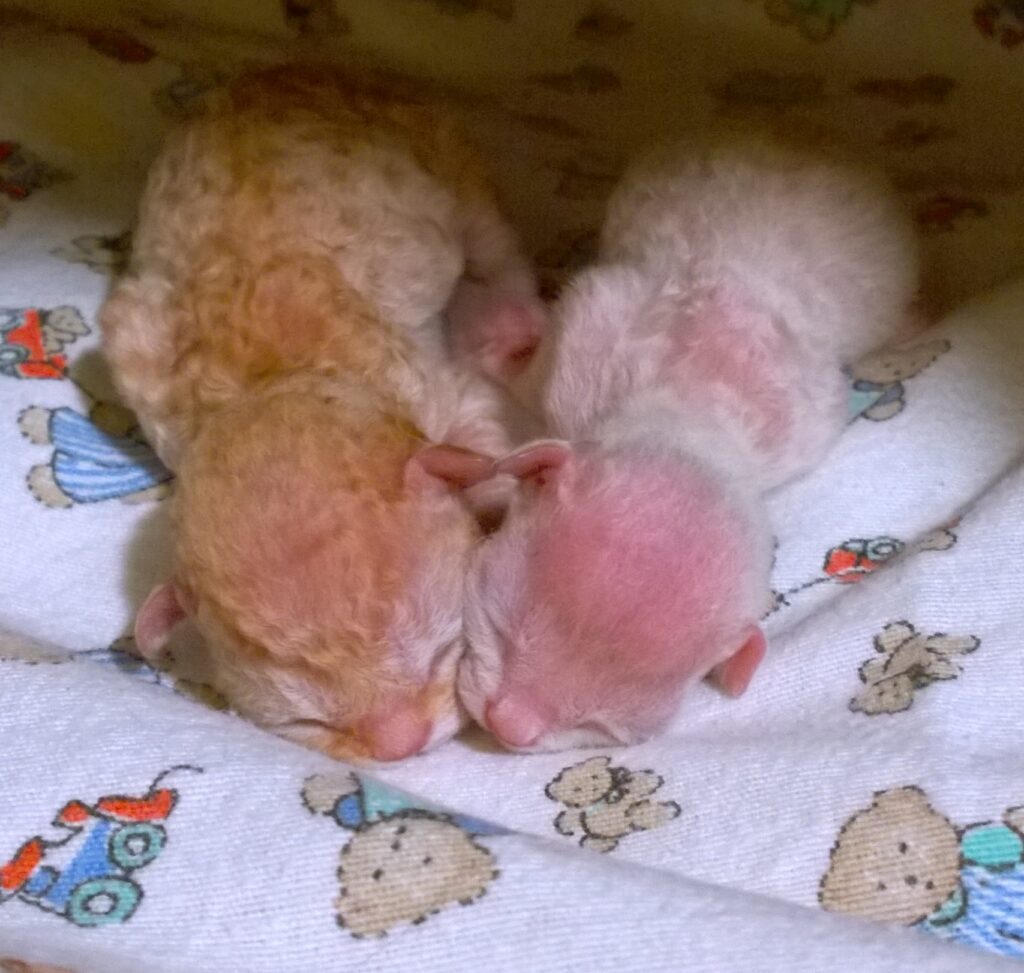
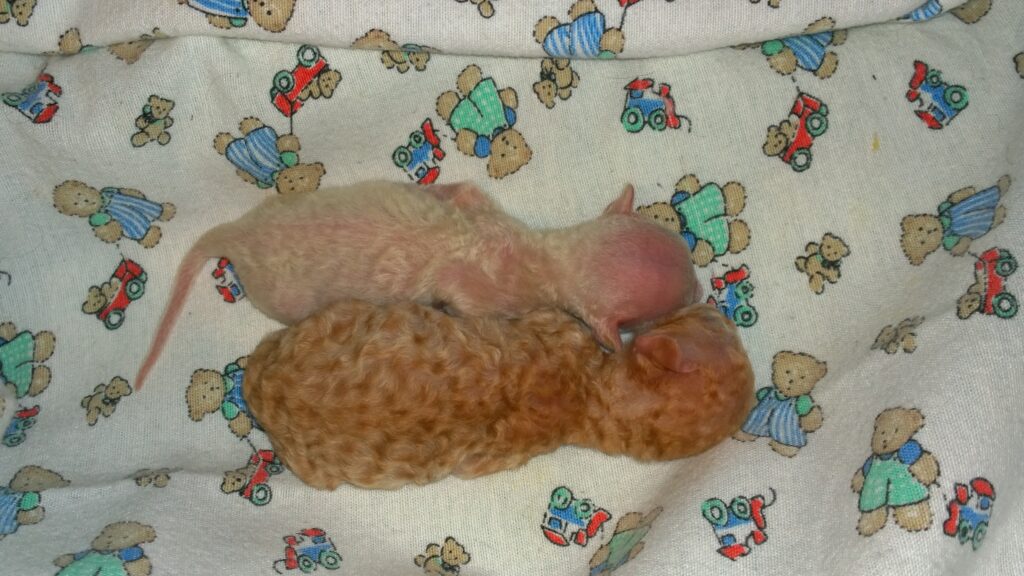
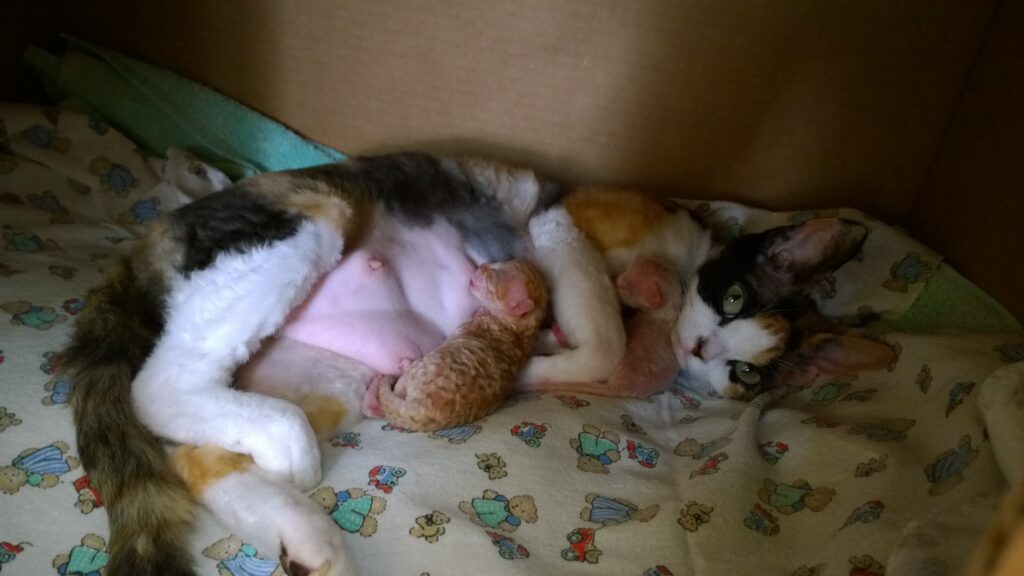
These two both were latching on and nursing nicely from the mother. We were still waiting for number four, and we continued waiting almost 19 hours. The mom had shown no signs of distress, and I had been calling my mentor for advice, so I was patient. Finally, there were signs of the last kitten. Unfortunately, only the bottom half was coming out. It was a very large kitten, lodged in place, and I saw no movement. I was so afraid for both the kitten and the mother that I immediately brought her to the emergency vet. Note that this vet hospital was literally a three- minute drive from my house. They took her in right away and said the baby was not alive. They said they would sedate the mother and try to manipulate the kitten out of her. If that failed, they would attempt to push the bottom half back in and perform a c-section.
They ended up performing the surgery. I tended to the kittens, bottle feeding for a few hours until the mom was released from the hospital at 1:00 am, roughly 24 hours after the birth of the two live kittens.
About 24 hours later at midnight, the mother cat came to my bed and woke me up. I immediately went to the kittens and noticed the red tabby crying and rolling over in a really strange way. His belly looked distended. So, I immediately brought him to the emergency vet. They said his temp was at 99 degrees and he had bruising all around his umbilical cord, as well as some rectal bleeding. They took an x-ray which showed air in the abdomen, but lungs and heart looked good. The vet said they had no answers and didn’t know what more could be done. They handed him back to me all wrapped up for the drive home. He was dead when I arrived at my house, just three minutes later.
The vet later told me they thought he must have had some sort of trauma, maybe the mother landing hard on him or something. Or, possibly Sepsis, but she couldn’t really say. I did not get a necropsy. At the time I didn’t see any need for it. Now, as a more experienced breeder, I know I should have gotten one. That could have helped later on when I started to have trouble with the last remaining kitten of this litter.
On September 3, the last kitten was just 2 day old, and I was a complete emotional wreck after losing three kittens and having had one of my two breeding females in emergency surgery with a c-section. I had decided at that point I would not be using her for breeding anymore. She was very small and even though her first litter was a success, I thought she had a more difficult time of delivering than she should have.
I was also second guessing if I was really cut out for breeding. This was extremely stressful and I was beginning to feel like a failure. All I could focus on was how sad this mother cat was when she lost her first one in the litter; how she kept looking for it; and now how she was trying to do her best with this last remaining baby.
The mother, Tetra, seemed to be cleaning the kitten obsessively. She was also crying out at times, in what seemed to be a cry of pain. I called the vet and was told that she might be experiencing some pain and tenderness due to the c-section.
On September 4, the baby being 4 days old, I started to get excessively worried that maybe something was wrong with this kitten. Tetra was nipping at him a bit and excessively cleaning him. I had been reading some information on litter losses and came upon Strep G, and was beginning to question if maybe we had something like that going on in the cattery. I thought his stomach looked a bit bloated, so I brought him and Tetra to the emergency vet that had seen her and the kittens before. She said the kitten had a normal temp, his belly just looks full of milk. It wasn’t hard like the last kitten, who had died a couple of days before. The mother’s temp was fine too, and her incision looked good, minus the fact that she somehow had attempted to bite her stitches out. Her nipples were not swollen and her milk was flowing fine. We were sent home.
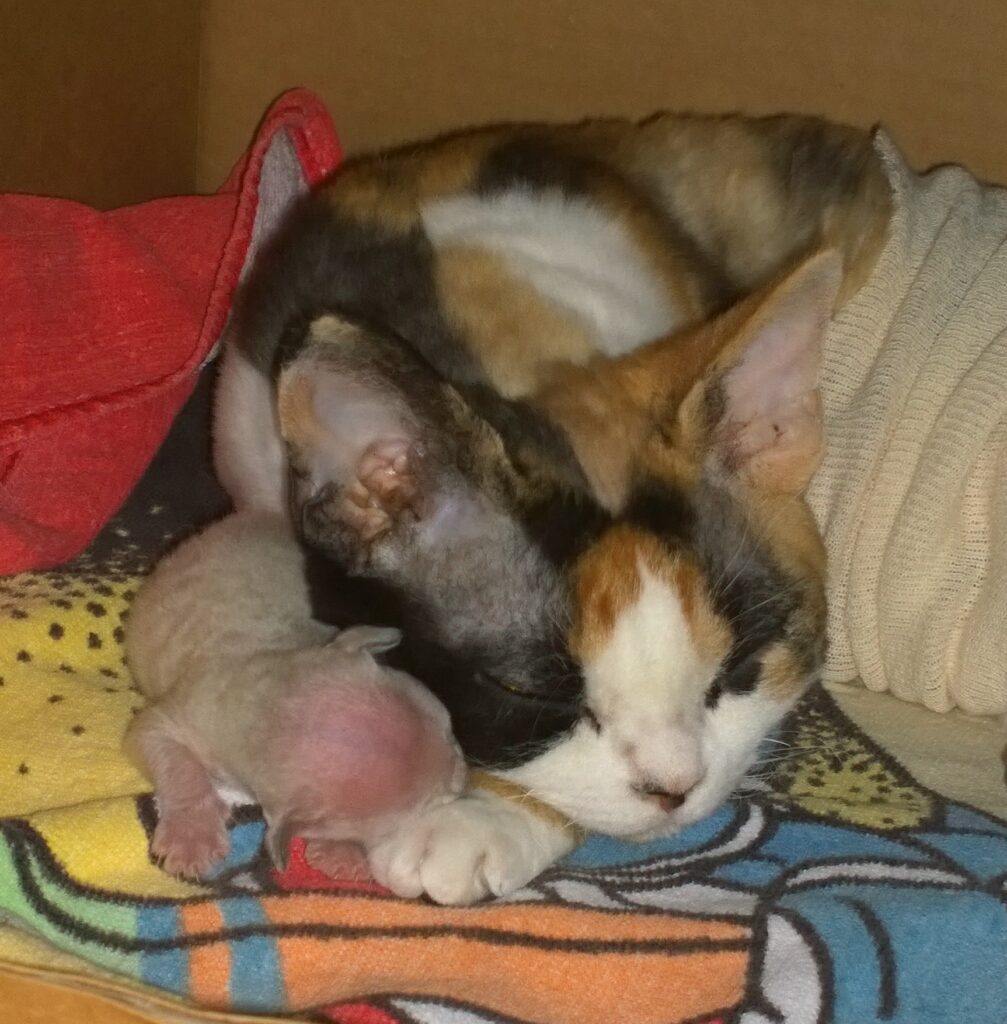
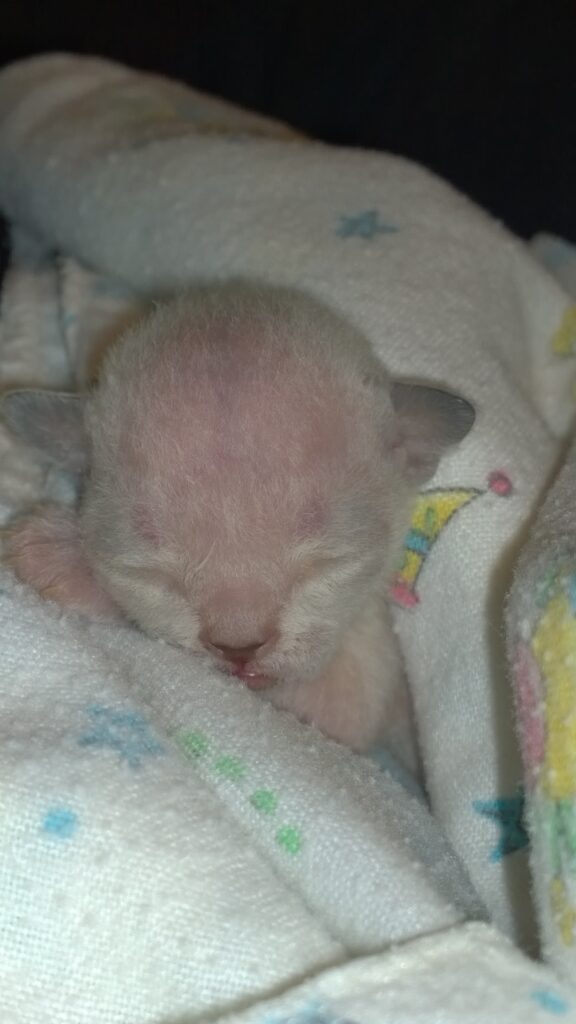
I carefully watched them both for the next few hours. What I was noticing was that Tetra wasn’t really trying to bite the kitten, but it looked like she was trying to get him to move a little. A couple of hours later, I managed to get an appointment with my regular vet, not the emergency vet. I wanted a second opinion on what I thought was a bloated belly. This vet didn’t think it was overly bloated. She said maybe the mom is overfeeding him since she is constantly waking him and prodding him.
I asked her to look at the information I had on Strep-G, and did she think that could be a possibility in my cattery since Tetra had one under developed baby, one extra large baby, one dying of unknown causes, and only one left. She agreed to treat for it just in case.
The treatment was to give the baby Clavamox and Clindamycin. The mother, Tetra was also treated with Clindamycin (1 ml). I began the Strep-G treatment on all the cats in the cattery at this time.
On September 6, the baby is now 5 days old. I was noticing that he was not really having bowel movements much and his belly was getting bloated. I tried to get him to crawl a bit, hoping to get things moving. I had also been separating him from Tetra since she was extra nippy towards him, and I felt she was being very rough. However, when she was back with him for a while, his bloated stomach did seem to go away. Maybe she was helping him eliminate as she should be.
At 6 days old, I noticed the baby was crying while suckling and he seemed to not be getting milk. Also, I started to notice labored breathing so I took him to the vet. She thought maybe he was aspirating, but I told her there were no signs of that when I was feeding him. (I was supplemental feeding via syringe). She did nothing and sent me home.
For the next few days he continued feeding, but his breathing was labored and he seemed a bit blue in color. This led me to do research on my own and found an article about Flat Chested Kitten Syndrome. Everything seemed to fit the description.
On day 10 I went to another vet, asking that they look for FCKS since I noticed his ribs seemed somewhat compressed. An x-ray was taken. The vet agreed the ribs were compressed, but said she never had seen a Flat Chested Kitten so she couldn’t confirm, nor deny my suspicions. She sent me home with no ideas on how to treat, nor with any thoughts on what to do next. I read some notes on the condition, and started to take things into my own hands.
I got in touch with a breeder from England, who had posted on a Facebook group, that she was treating a kitten recently for Flat Chested Kitten Syndrome. She directed me to a couple of websites that I immediately went and checked out.
How to Treat Flat-Chested Kitten Syndrome
Flat Chested Kittens – One Treatment Option, by Jennifer Herr
Finally, I felt I had some solid advice and maybe my kitten would have a chance. I wasn’t going to leave it up to the vets anymore. I needed to take action asap.
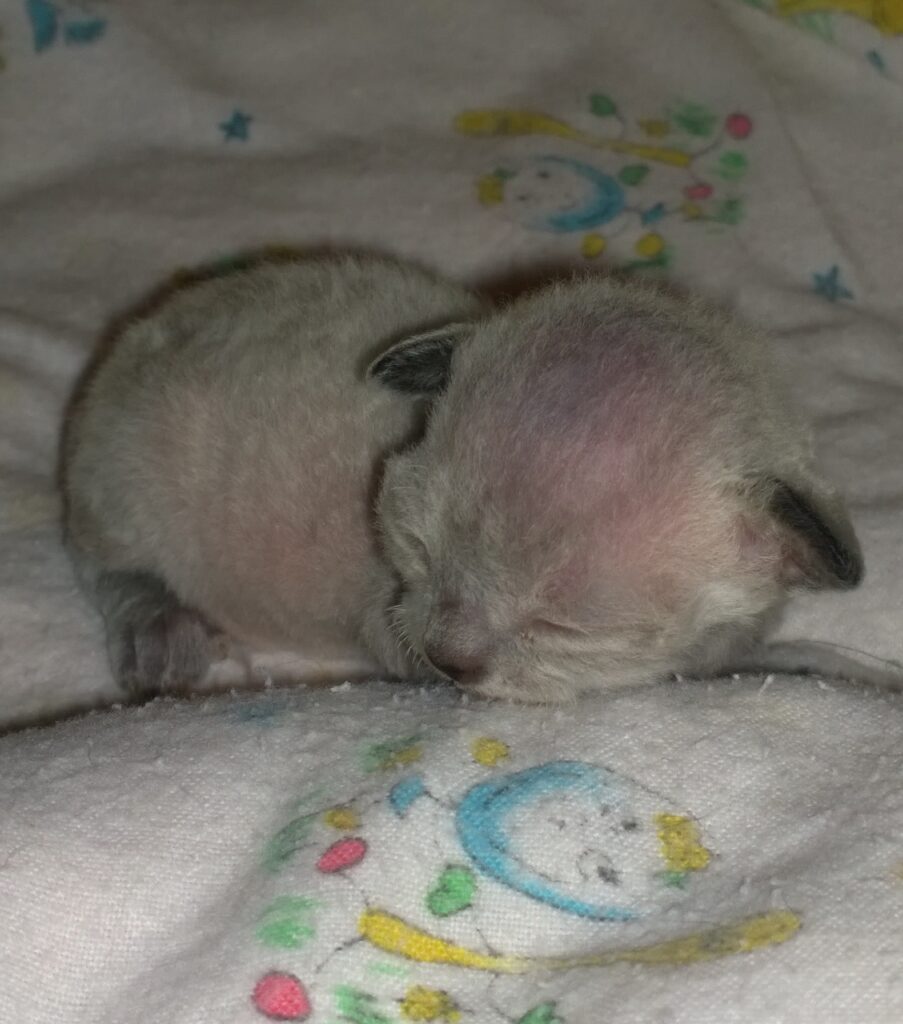
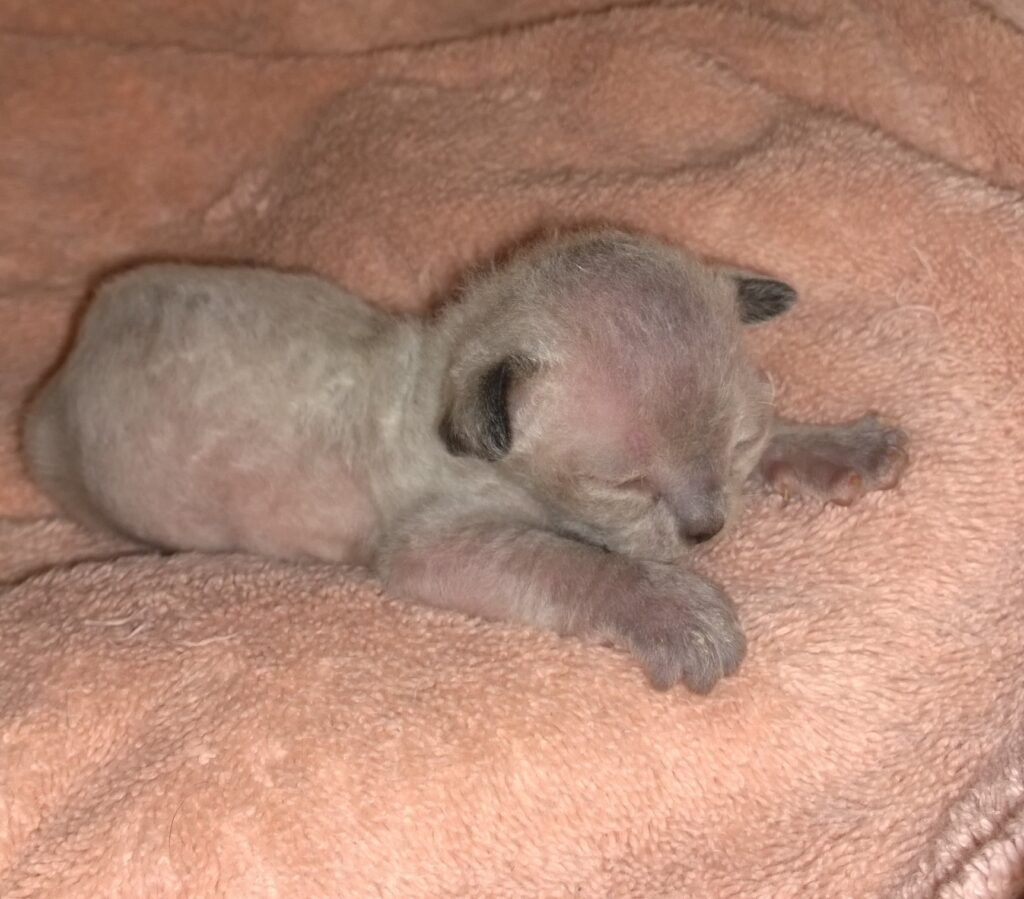
Here’s what I did. I put mom on 250 mg of Taurine once a day. I rolled up a pillow case to keep the kitten inclined as much as possible. I also heard that massaging the chest gently each day could help, so I tried that. I started him on one drop of NutriCal each day to aid him in getting the proper nutrition and vitamins.
I hadn’t made the brace right away, because I had read in the papers on Flat Chested Kitten Syndrome that there are two kinds of Flat Chested Kitten Syndrome. One would do well with a brace, and for the other, it could actually do more harm.
This boy was such a fighter. He wasn’t giving up no matter what. On day 16, I finally named him Rocky after the movie with the same name. He continued to have labored breathing and at times his color was tinted blue. I was sure he wasn’t getting the oxygen he needed and felt I had to attempt the chest brace(corset) since everything else wasn’t working the way I felt it needed to. I had scheduled an appointment with yet another (different) vet, but that wasn’t for a few more days. So, I started out with a little corset made from a toilet paper roll, with openings for his two front feet. I just felt he was too small to make him one out of a plastic bottle at this point.
In some further reading I discovered that some people feel Flat Chested Kitten Syndrome could be caused by a lack of vitamin D. I knew it wouldn’t hurt, so I added that to his daily regimen of treatment on Day 17. I used human baby grade liquid Vitamin D. It’s not cheap, but the best for digestion and absorption.
On day 18 I brought him to a new vet and FINALLY I got the confirmation I was seeking for so long. Rocky had Flat Chested Kitten Syndrome (not an inverted chest), so the brace/corset I made was a good idea and wouldn’t hurt him! I was elated! A vet who actually confirmed what I believed this kitten had all along. He told me I was doing a great job and to continue doing exactly what I was already doing. But it was time for a better corset. This one I had started out with was restricting his front leg movement and I didn’t want to make it even harder for him to move around. He was already limited by his laboured breathing.
I followed the illustrated instructions from the document Flat Chested Kittens – One Treatment Option, by Jennifer Herr. I found a plastic vinegar bottle which seemed to be the right thickness. I made the measurements she detailed in the file, and then cut the plastic to size. I wrapped it with the medical bandage adhesive and cut the little suspenders to attach as is explained. This takes some time to get everything just right. You want it to be just tight enough to apply some pressure to the rib cage, but not overly tight.
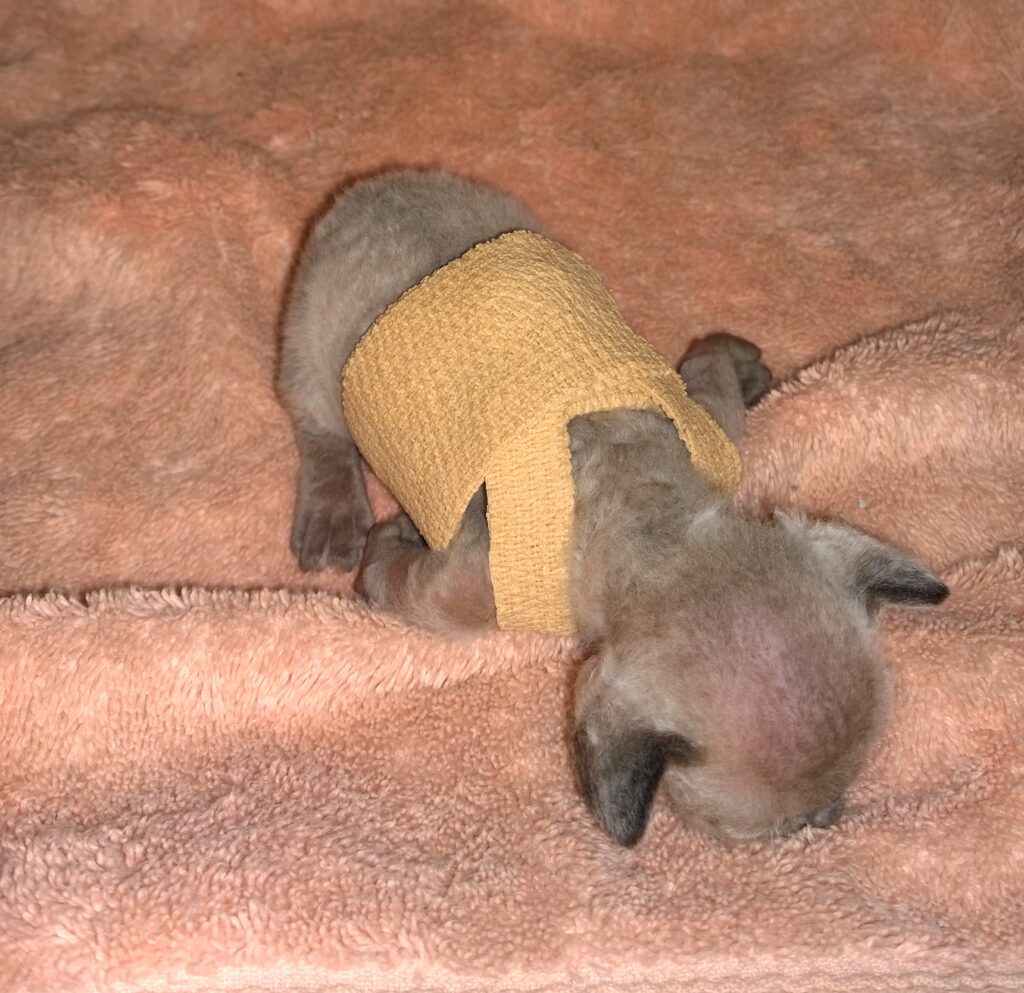
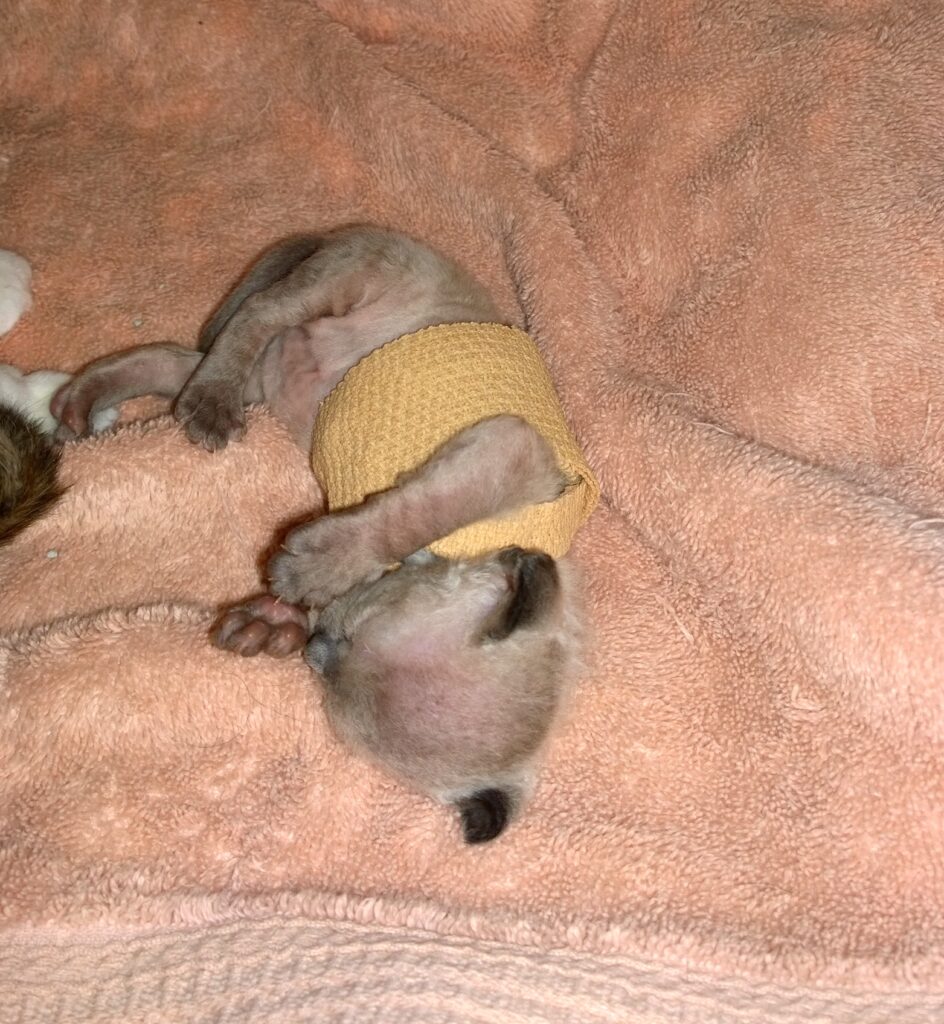
Each day I would remove the brace for a while and massage/examine his ribs. On day 20 I noticed that his ribs were moving more inward and rounding some. However, his breathing was more labored with the brace off, so after a few minutes, I put it back on. As time went on new braces were made to adjust for his growth as needed.
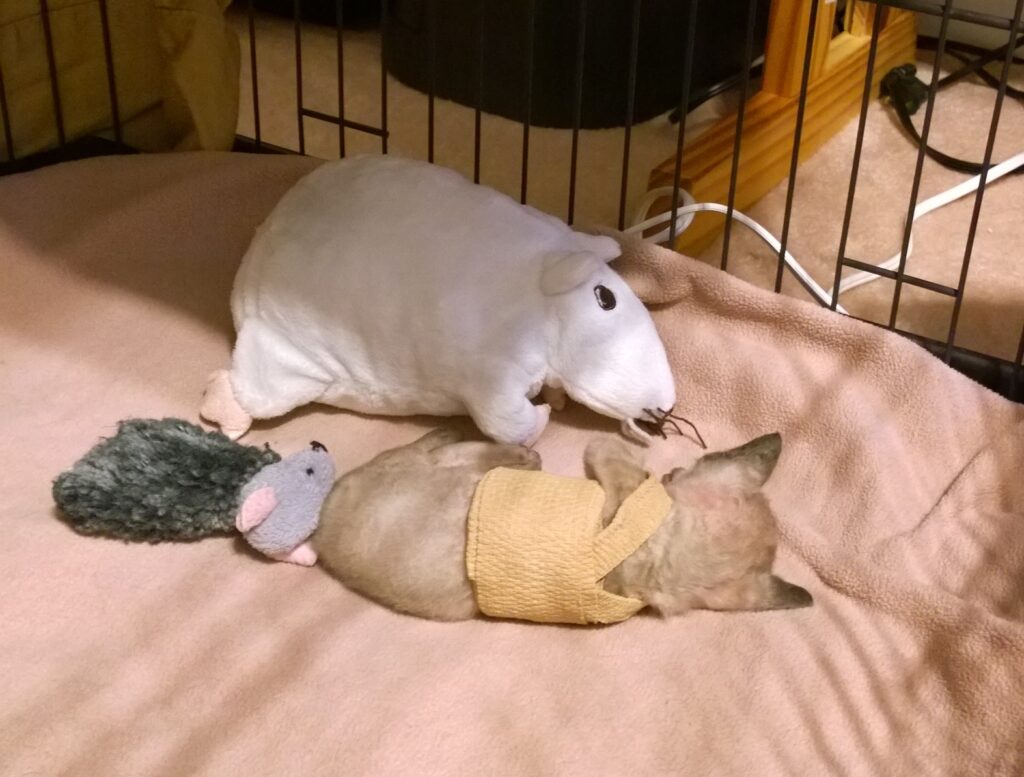
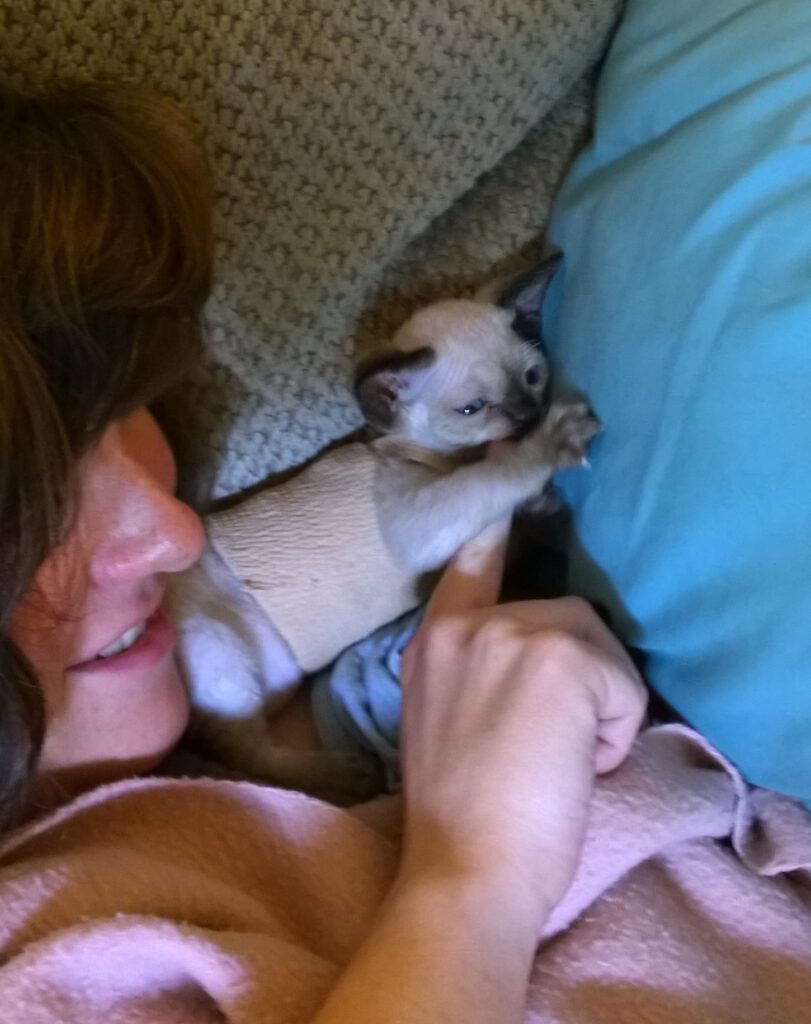
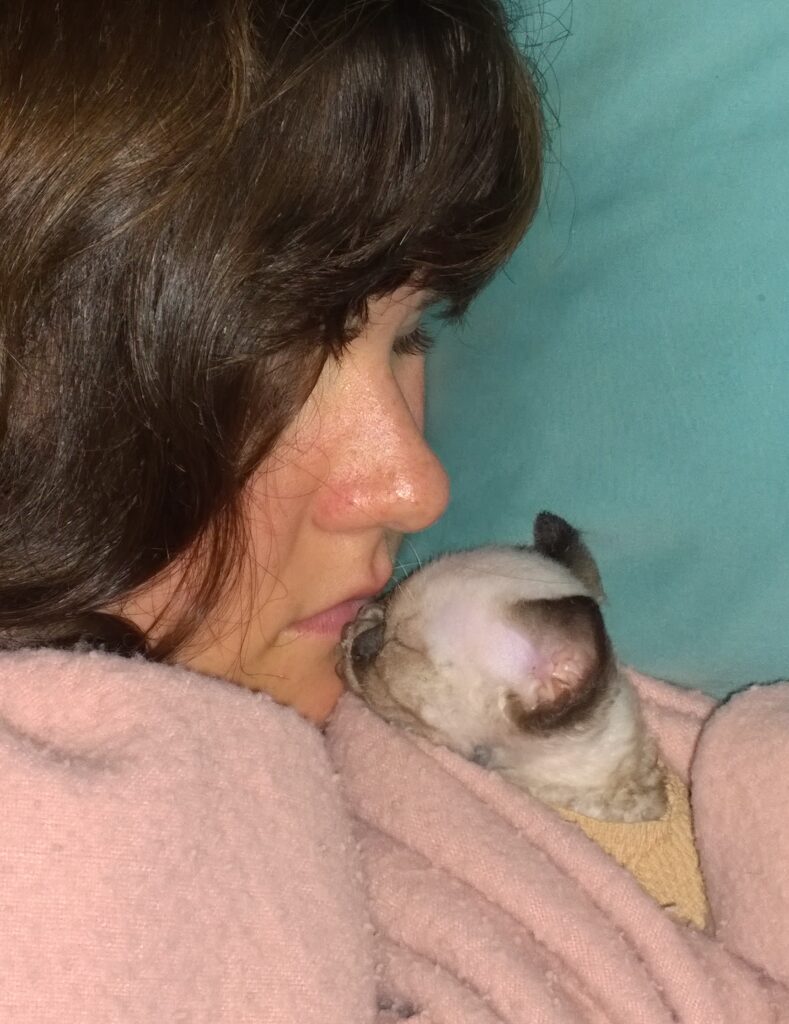
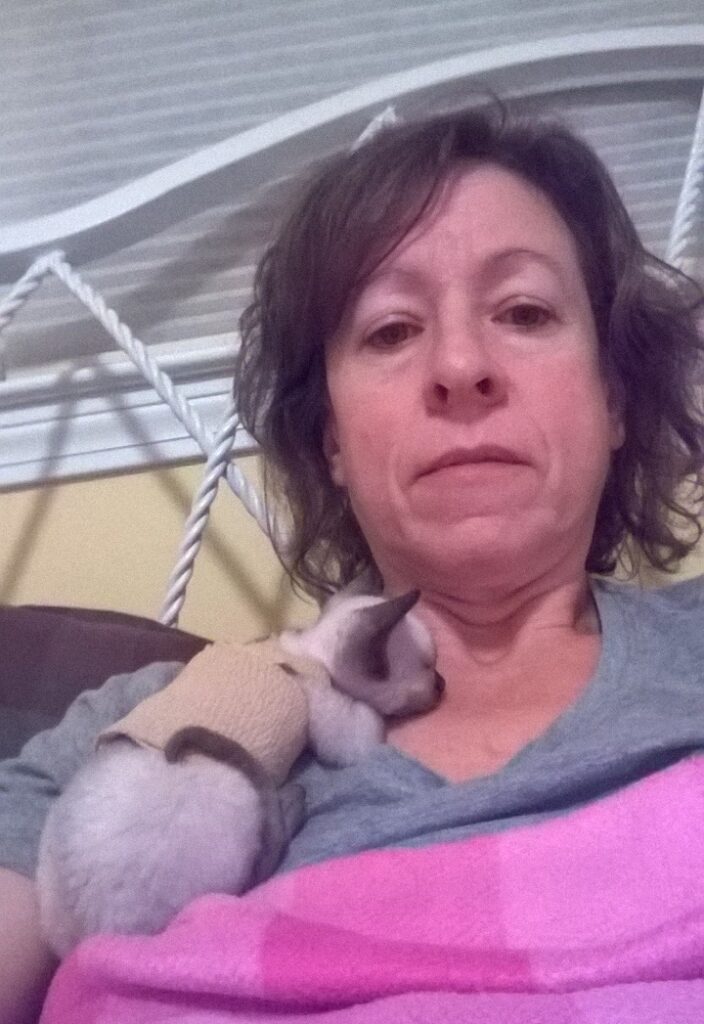
On day 40 I removed his brace for good!
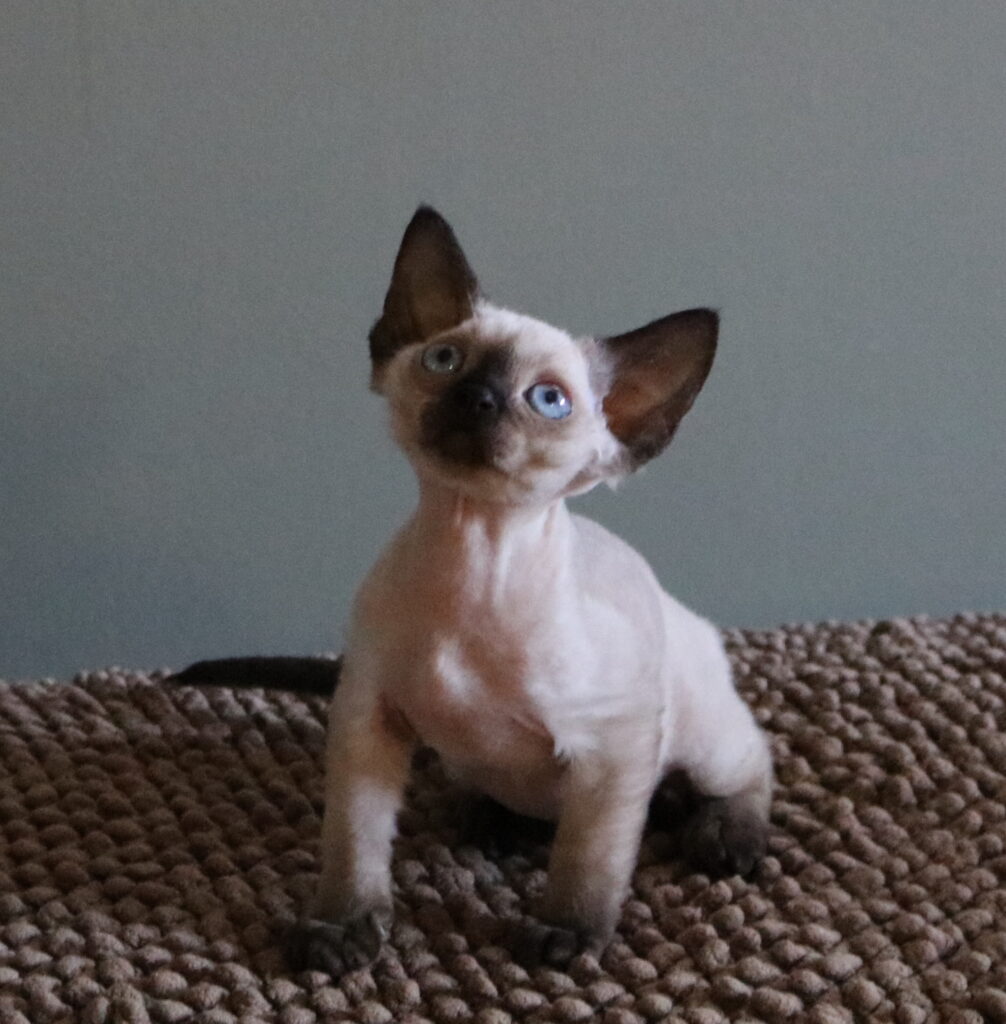
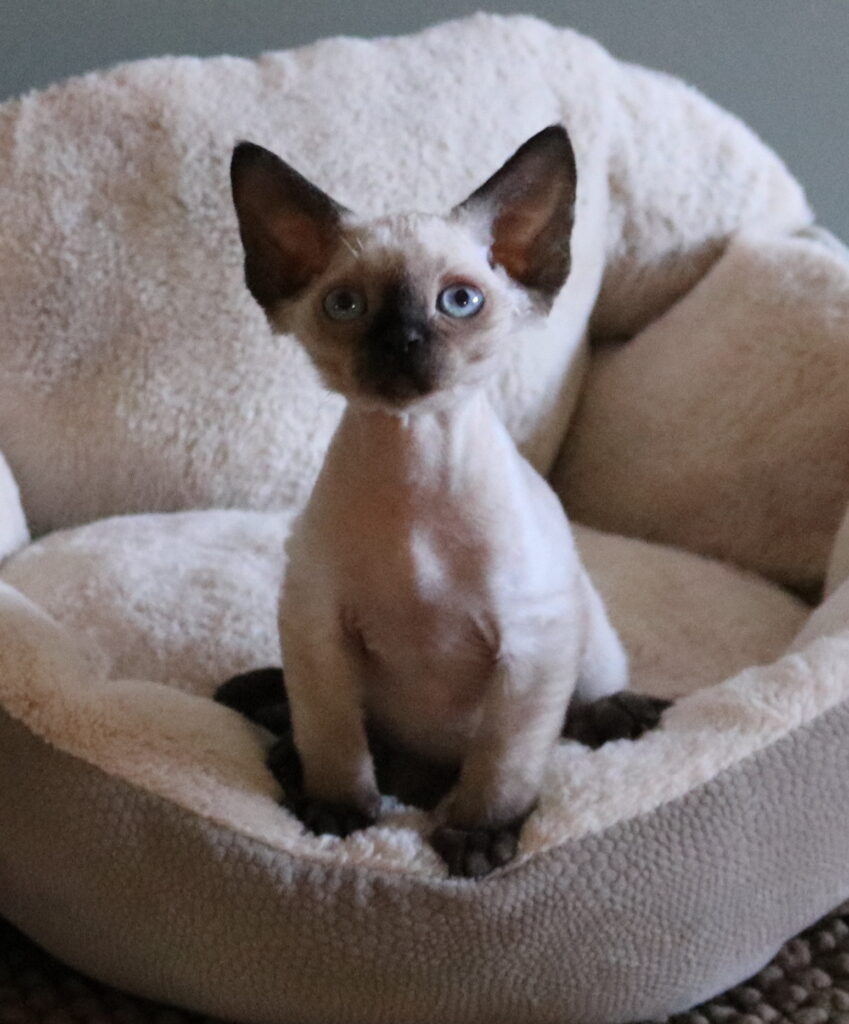
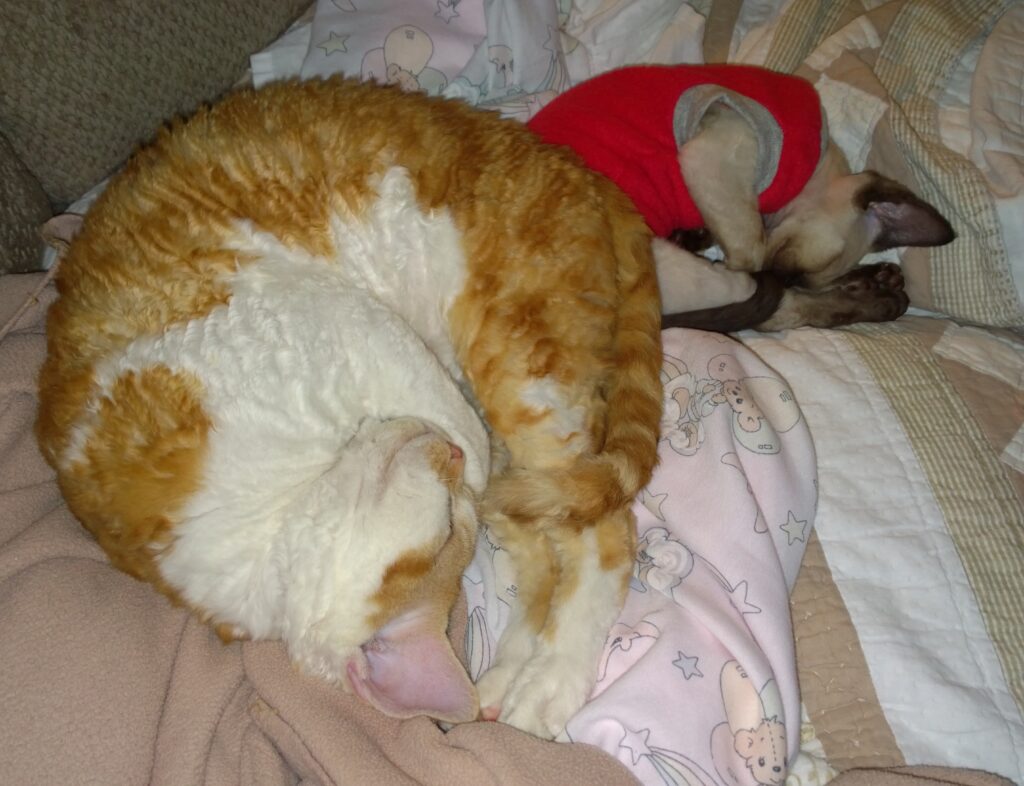
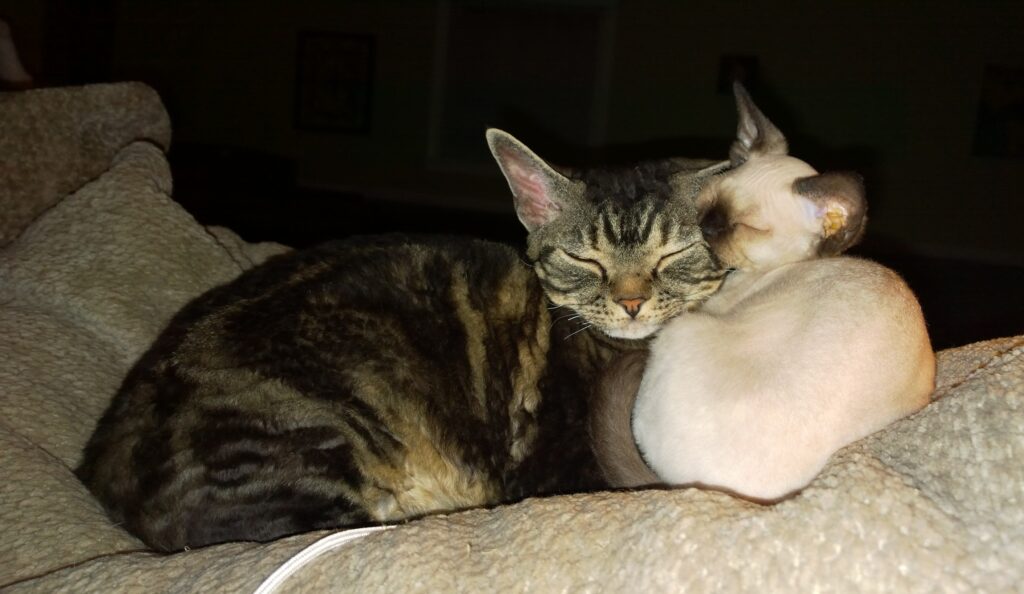
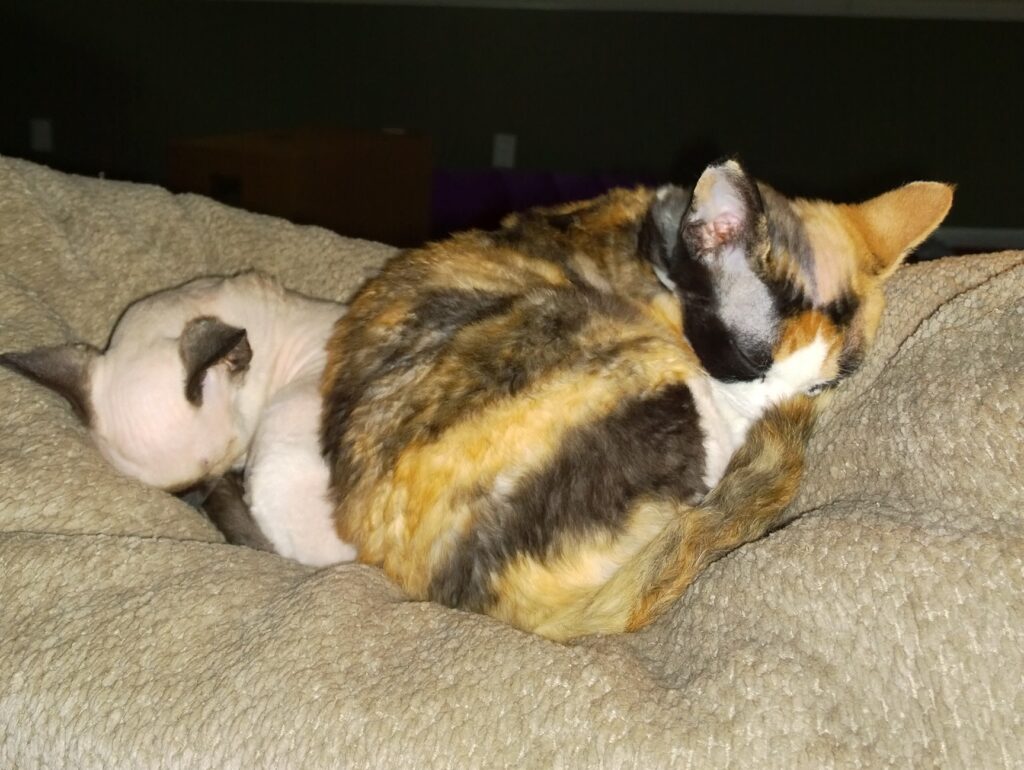
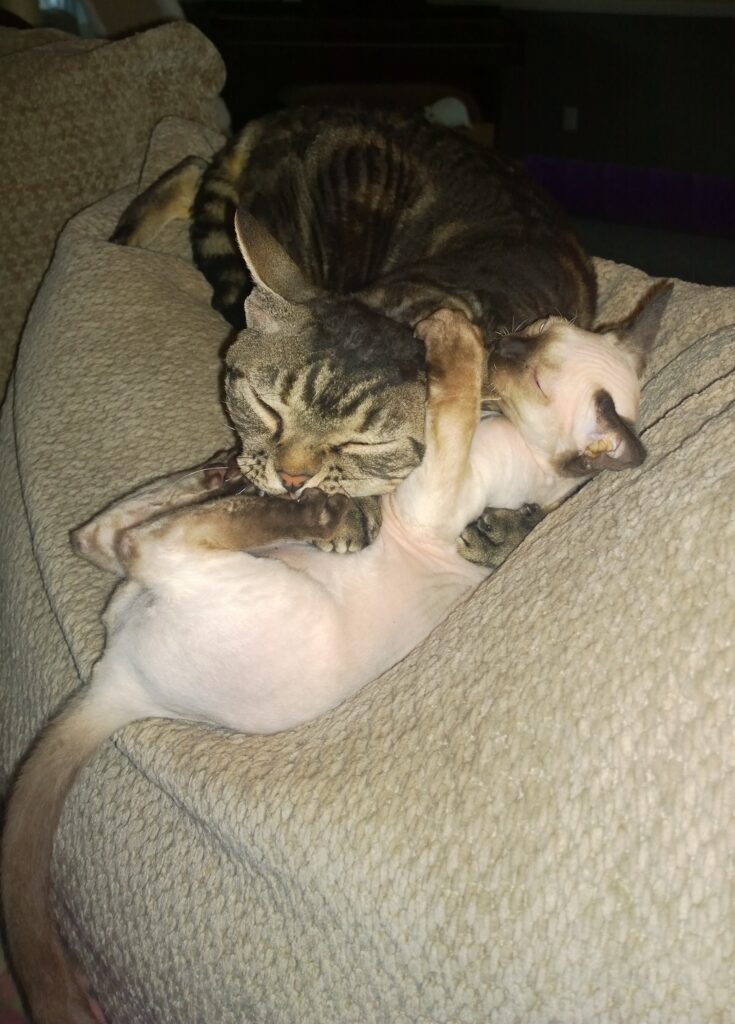
At 5 months old, before placing him with a family, he had a full check up with a chest x-ray and he had no signs of Flat Chested Kitten Syndrome. His rib cage had taken the correct shape, and he is a happy, healthy 2 ½ year old cat today (March 18, 2021).

Recent Comments